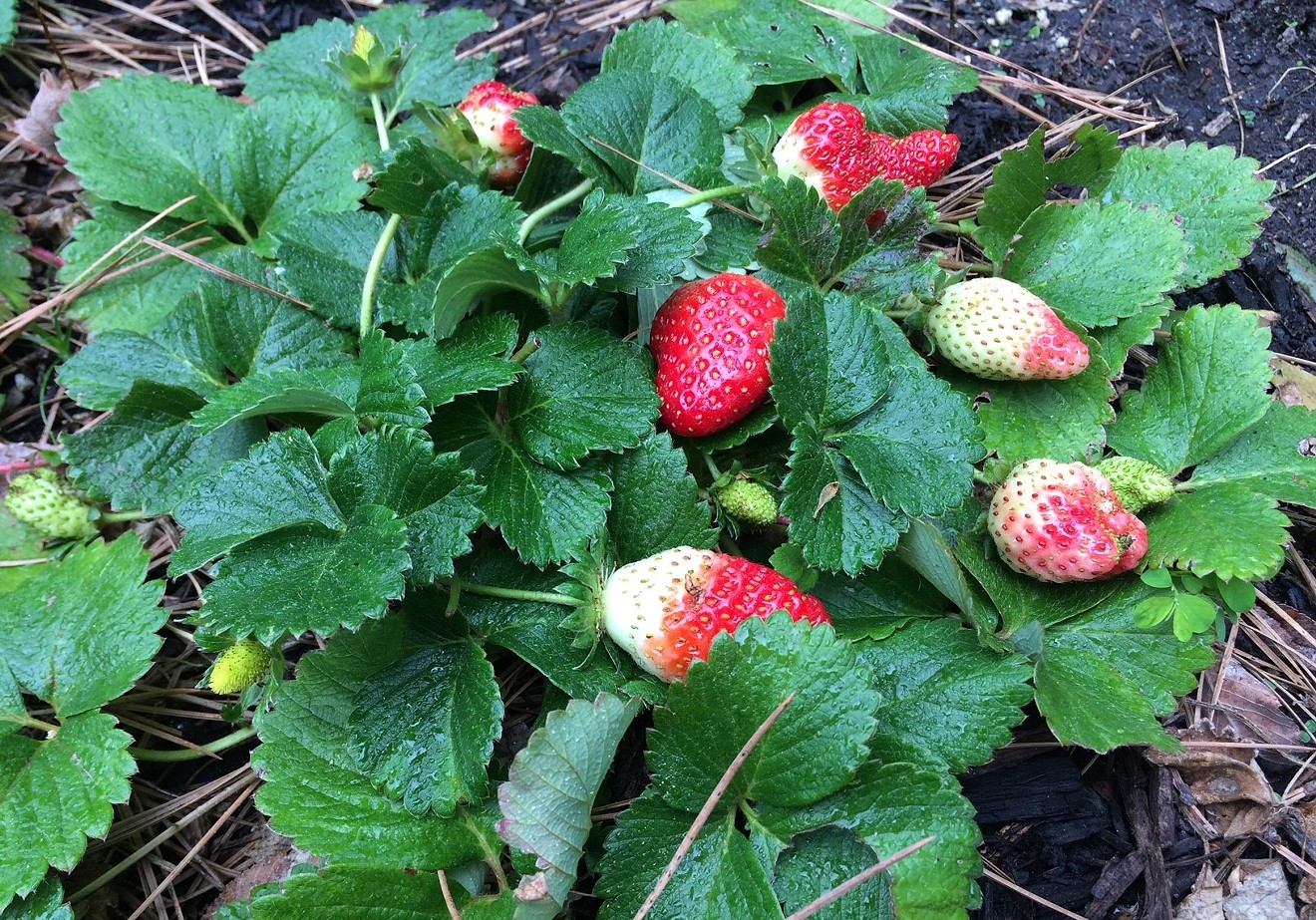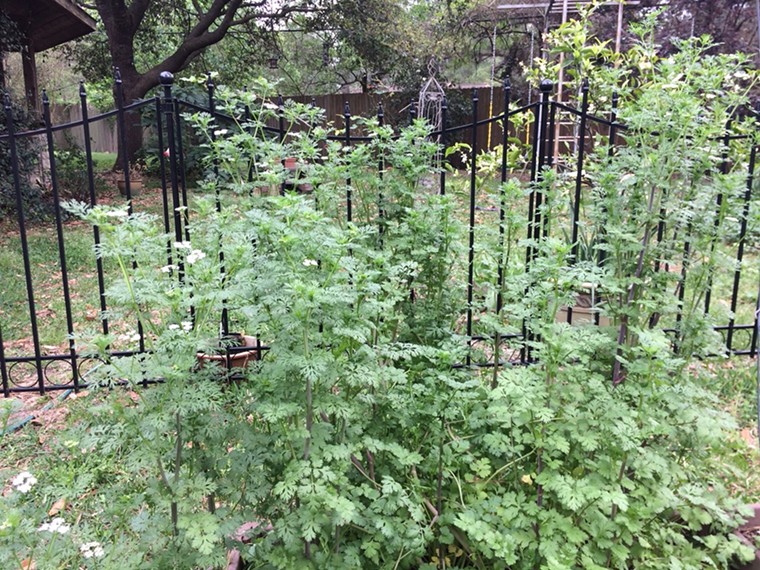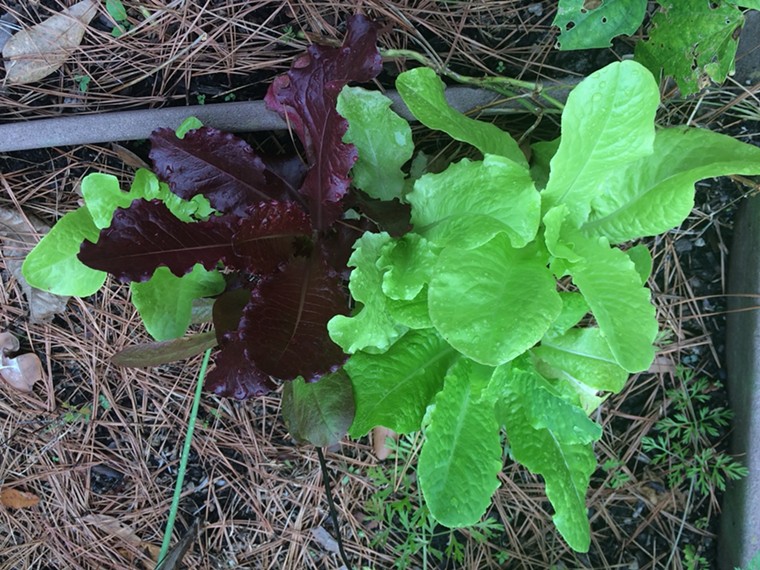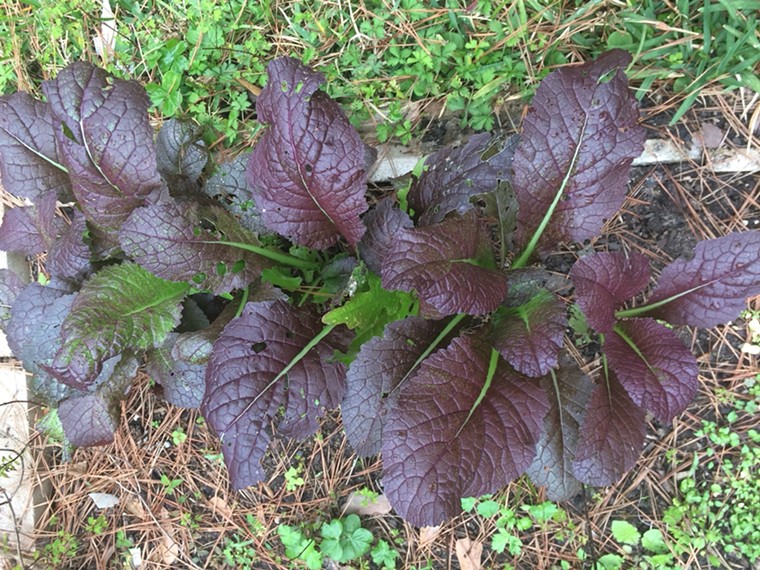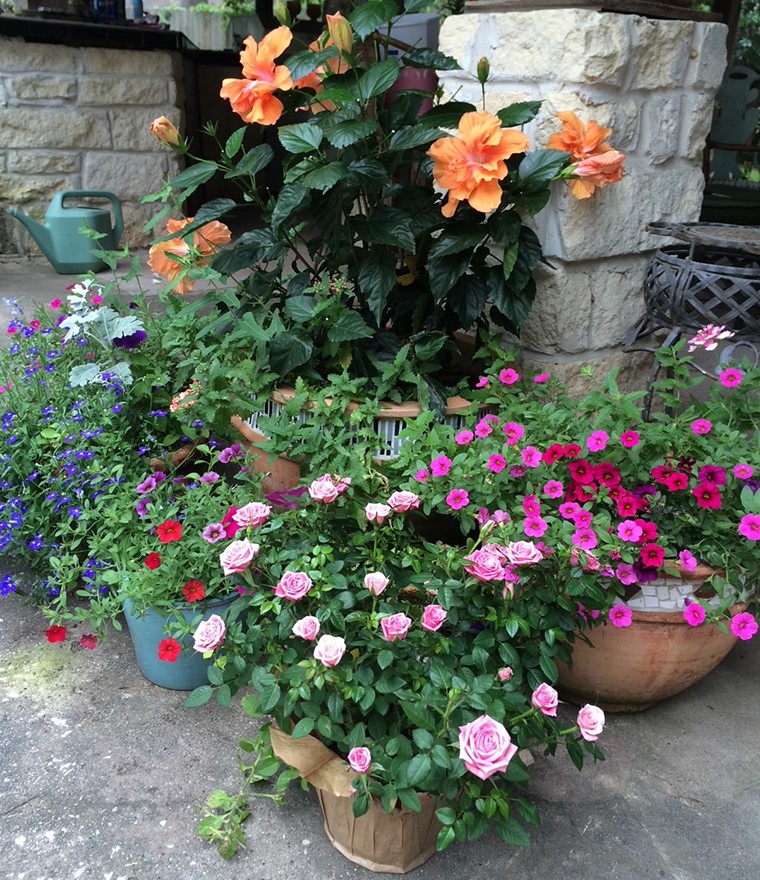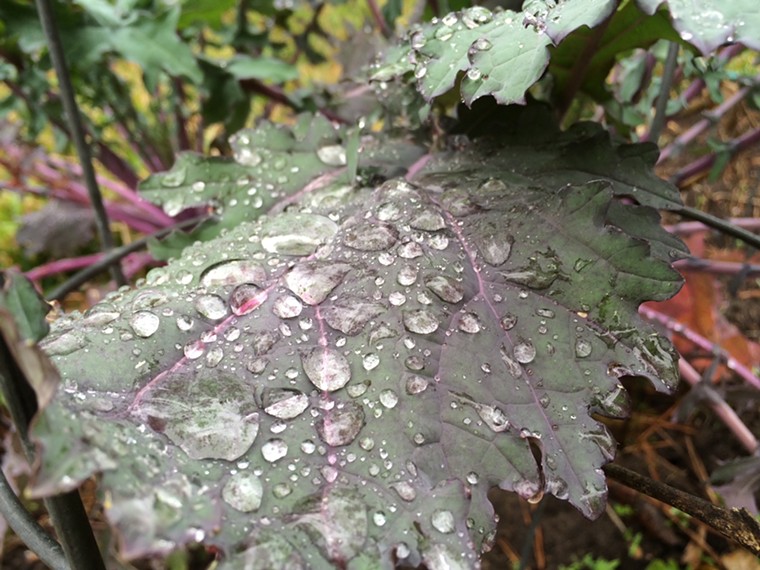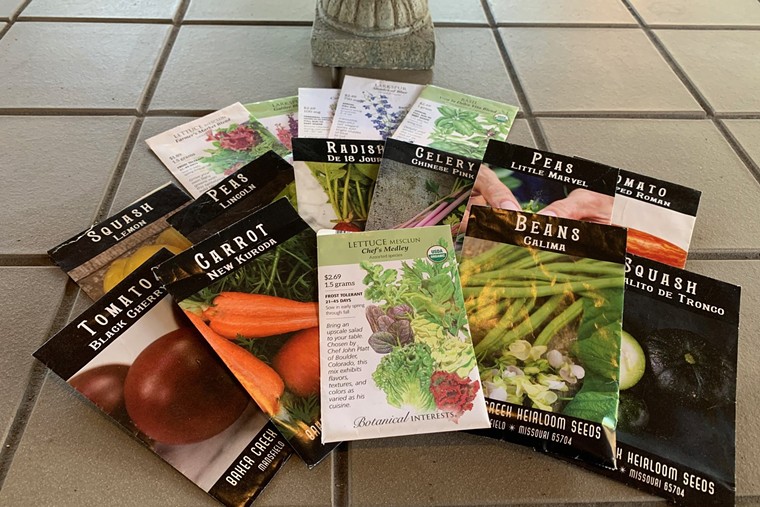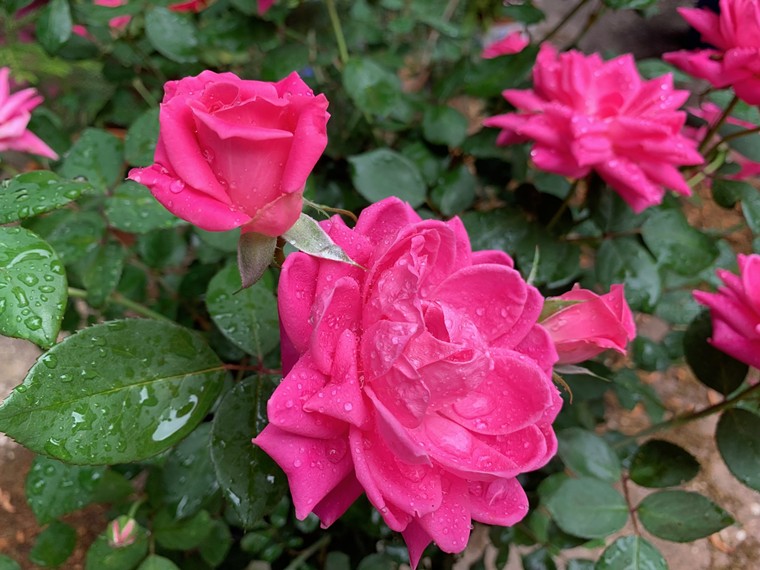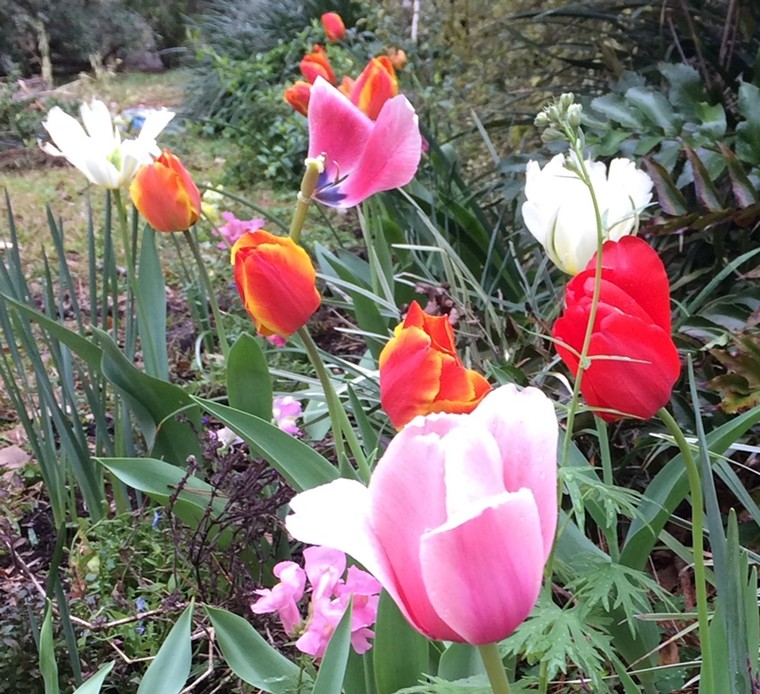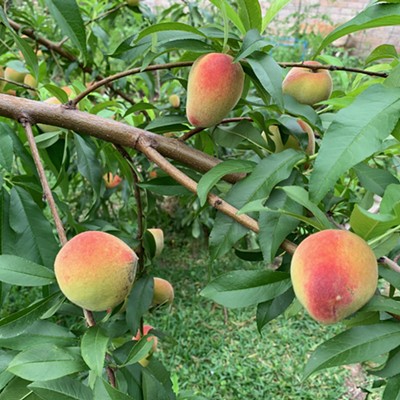But, as always happens this time of year, we get sneak peeks of promise. With temperatures in the 60s and 70s and mostly sunny skies, it's tempting to forget we are just now entering into February. Winter storm Uri happened in mid-February 2021 bringing snow and single-digit numbers to our semi-tropical clime. And the recent hard freeze this month lasted long enough to do some major damage to tender and even not-so-tender greenery.
For green thumbs in Houston, February brings a mix of excitement and fear. We impatient types want to set out tomato transplants as soon as possible to get ripening fruit before the summer heat. Late February is often amenable to our wishes, until March comes along with a freak freeze or a week-long downpour and gusty winds. Unfortunately, we cannot fly to Mother Nature like Mrs. Claus in Rankin Bass' The Year Without a Santa Claus and politely ask her to make her sons Heat Miser and Snow Miser behave.
We are at the mercy of our climate, one that seems to be getting harsher all the time. If we face the cold, hard facts, we can learn to accept that gardening is a gamble and to take our losses along with our wins. And the next couple of months will test our resilience.
Our week by week checklist for February is flexible. It all depends on the weather and we all know how dependable Houston's forecast can be. Keep an eye to the sky and an ear to the meteorologists while getting the garden prepped for spring.
February Week One:
Survey the Damage
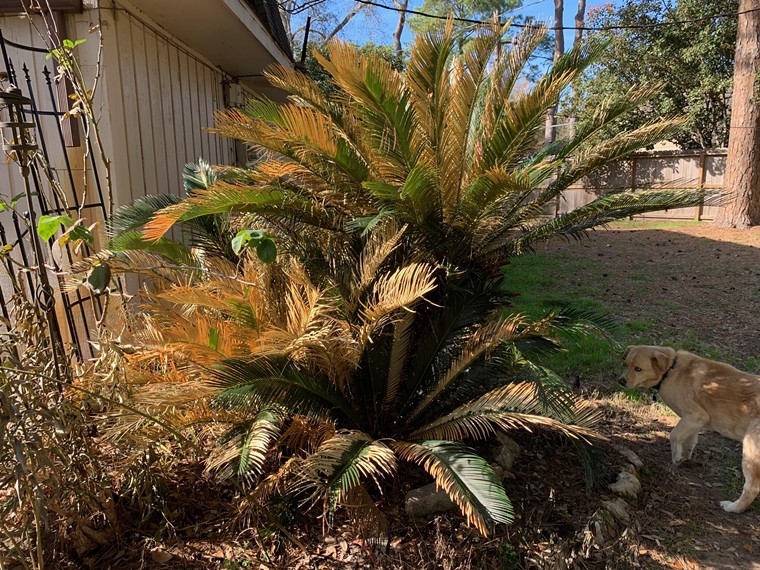
To paraphrase Miracle Max from The Princess Bride, this sago is only mostly dead.
Photo by Lorretta Ruggiero
It's also important to look closely and see what has self-sown. I have dozens of tiny cilantro seedlings in the vegetable patch plus mustard greens growing in the lawn nearby. A forgotten duo of strawberry plants have been dug up and potted, as well as a stray red leaf lettuce seedling.
Though some clearing out can be done now, it's best to wait to prune back dead wood, stems and leaves until we are past all danger of frost. Also, leaving the plants alone for now means that you know where they are. If you cut them back now, you may forget they're even there.
Another way to prep for the spring is for gardeners to visualize what they want for the spring and summer. Sit in your front yard with a cup of coffee, facing toward your house. Your neighbors might think you're odd (or rude) for showing them your back but looking toward your home and yard offers the curbside view that everyone else sees, one that many of us get blinded to by familiarity.
February is also a great time to hang out in the backyard, around the firepit, and dream about making it your private little Eden or a swinging joint for entertainment. Watching the movement of the sun and the various patterns of light can help in choosing plants for the right spot.
Sow Seeds
Though winter isn't over, there are still some vegetables and flowers that like a little chill. Beginning now through March, vegetable gardeners can sow seeds such as carrots, beets, lettuce, spinach, kale, mustard greens, collards, radishes, snow peas and English peas straight into a raised bed or vegetable patch that has been amended with compost and/or aged manure. For those who don't have much space, leaf lettuces work well in pots.
For indoor sowing, it may be too late for tomato seeds but I am starting a few this week to add to the transplants I will purchase later this month. Herbs like parsley, cilantro and basil can be started indoors and kept in pots for easy access. My cilantro and parsley self sow in the garden so I am already getting seedlings from last year's plants. Eggplants should be sown now for transplanting in mid to late March.
I am holding off on transplants right now but cauliflower, broccoli and cabbage can be planted from seedlings through the rest of this month. I have already planted onion bulbs but some gardeners might want to give them a late try. They may not bulb completely before the heat but you'll have plenty of green onion tops for cutting.
As for flowers, zinnias are easy to sow in pots and transplant but I prefer to wait for warmer weather to sow them along with cosmos because they are both easy to grow and fast bloomers.
February Week Two:
Flower Power
If your garden's lack of color has got you down, nurseries are beginning to stock the cool-weather annuals that will endure unless there's another hard freeze. Pansies, violas, stock, Gerbera daisies, dianthus and snapdragons will brighten up the sad beds around our homes. I have to buy more lobelia for the spring because the recent freeze was too much for them. Biennials like foxglove, hollyhock and delphinium can be grown from nursery transplants now but there isn't a 100 percent guarantee that they will bloom this year.
Edibles
Strawberries will show up this month and it's a great time to plant them. I have had no success with the bareroot options so I stick to transplants. For a couple of years, I had a pretty awesome strawberry patch in a raised bed. I ignored the advice about cutting off runners and picking blossoms the first year. I just let the plants do their thing. Unfortunately, it was a daily race to harvest ripe berries before the roly-poly bugs chewed holes in the precious fruit. After cradling each ripening strawberry in plastic bags or used veggie containers, I thought, " This is a helluva a lot of work for a freakin' berry!" I decided to grow strawberries in pots and hanging baskets instead. Which, of course, puts them in the sight of hungry birds. Ah, well.
Cool weather veggies can still be sown from seed this week. Fruit trees will begin to show up at the garden centers and it is wise to do research on varieties and their specific needs before purchasing. Then, decide where you want it to go and prepare the spot beforehand. Many peaches do well here as do figs, pears, satsumas and plums. Fruit trees can require some serious pruning and fertilizing plus disease and pest control.
For me, fruit growing has been a challenge. One peach tree has given me a few dozen fruit while another has given me zero in five years. I still get nervous when pruning them, no matter how many videos I watch. My Mexican key lime tree is in a pot, covered with white blooms and tiny little limes, which inevitably fall off. I am still hopeful that I will get enough to make a batch of margaritas. The little sucker owes me that much.
Figs are also a great fruit tree for Houston, though I am still waiting to see if my LSU fig made it through the freeze.
February Weeks Three and Four:
This is where it either gets crazy busy in the garden or we get hit with a late cold snap. Throw that dice, baby, and let it be a seven! Depending on the forecast, transplants of tomatoes can go into the ground along with herbs and potato slips. For those who didn't sow seeds, nurseries will have transplants of lettuce, spinach, cabbage, bok choy and other cool weather vegetables. However, compared to starting from seed, transplants of normally cheap items like lettuce and spinach might not be terribly cost effective. Gardeners may want to save room, and money, for vegetables and fruit that taste better straight out of the garden and cost more at the grocery store.
Blackberry, blueberry and grape plants will also be available, as bare root or in pots. Bare root is usually cheaper but potted specimens may produce sooner. I have great luck with thorn-less blackberry varieties and little luck with blueberries. As for grapes, the less said about them, the better. Okay, two words: Pierce's disease.
If the weather is unseasonably warm, eager beavers might try sowing summer squash and beans. The seeds are cheap so it's worth it to take a chance. Plus, bean seeds are prolific and ideal for succession sowing every week or two for a prolonged harvest.
Now is the perfect time to plant bareroot or container-grown roses so that they can get established before the heat. Pick a spot before buying or you'll be like me, desperately sticking a bare root rose in a spot it probably shouldn't be in, three weeks after letting it suffer. February 14 has always been the recommended time to prune roses, though some could be done a week or two earlier if the forecast is a mild one. Some need to be cut back quite a bit to spur new growth while some older roses don't like to be pruned severely. Climbing roses have completely different needs in order to train them. If you know the type of rose you have, it's best to research what its pruning needs are.
Mid-February is also when Southern folks go crazy and commit 'crepe murder'. That's been a coined phrase for years about the severe pruning many homeowners and landscapers do to crepe myrtle trees. Or crape myrtle trees, to others. Or even crapemyrtle.
Besides the debate over its proper spelling, the pruning of crepe myrtles is an even bigger point of contention with many experts. Most disagree with the extreme topping of the ornamental trees. It's believed that it will eventually lead to weak shoots and even suckers that open the plant to decay. There are numerous websites offering tips on pruning. For those of us in the Houston area, Southern Living magazine has some tips that work for us.
The last couple of weeks of February also mean cutting back dead leaves and stems, cleaning up the flower beds and laying down fresh compost and mulch. Fertilizing can begin for some shrubs and trees but there are many specific requirements for different plants. Good compost can be enough for some. Other plants may need additional nutrients. Because most gardeners are not biologists or chemists, it can be overwhelming to figure out the needs of each plant. Oftentimes, Mother Nature (when she's not trying to control her unruly sons), takes care of plants with just a little care from us.
Next month, we march into March!

